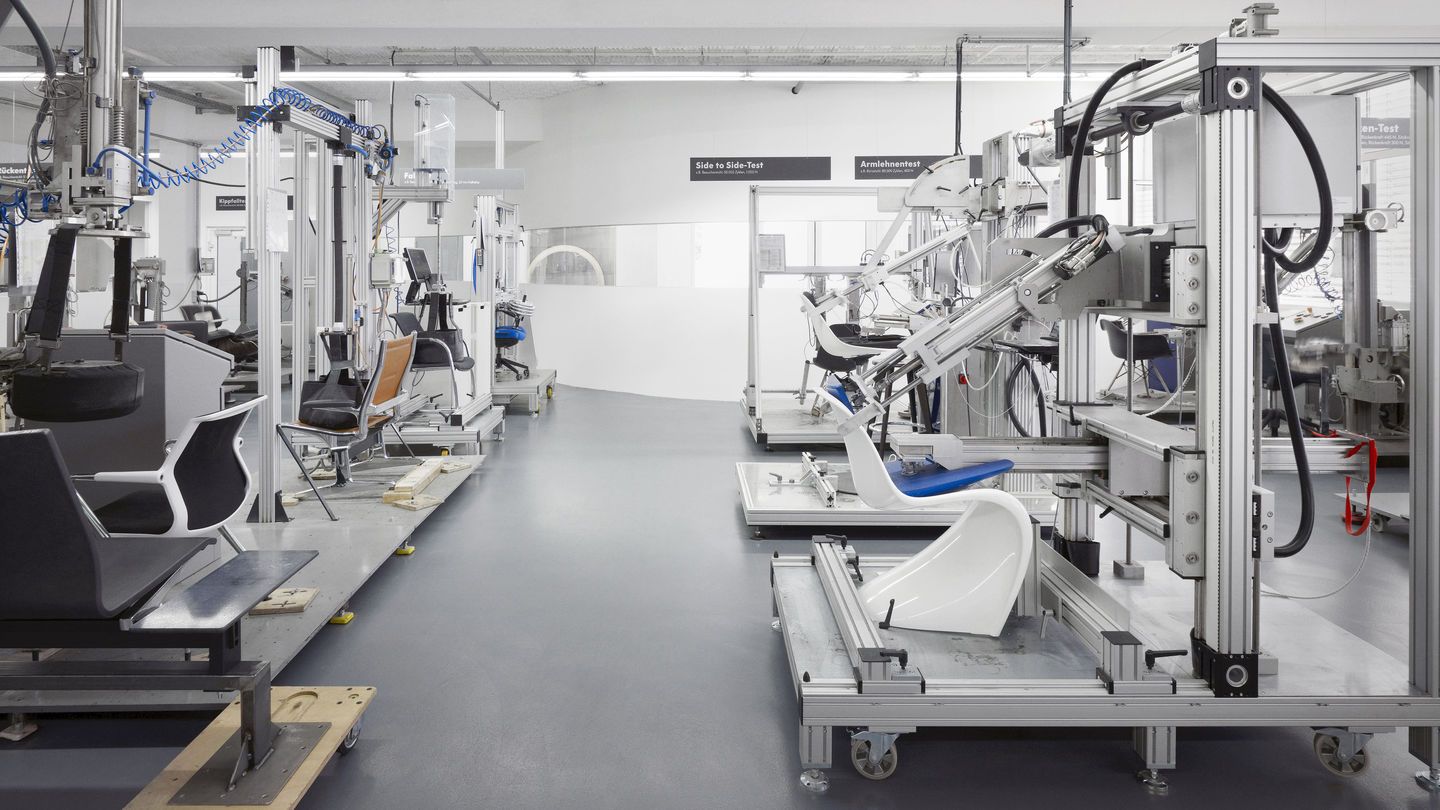The seating comfort of Mikado is determined by the upholstery on all four sides and the movement of the backrest: an ingenious yet simple mechanism hidden under the seat allows the backrest to recline to a comfortable angle.
Mikado contains a lot of recycled materials. Individual components, including the cover, can be easily repaired or replaced by service personnel, helping to extend the chair's lifespan, and at the end of Mikado's useful life, all parts can be separated and recycled or properly disposed of. The cover is not glued or stapled, and the polyurethane foam can also be easily separated from the seat cushion support and back shell. 
 Mikado is available as an armchair or a side chair. In the armchair version, the rounded sides of the backrest extend forward and at the same time function as armrests. Mikado is a poised and dignified chair that aims to impress not only with its form but also with its seating comfort. Mikado's seating comfort is determined by the upholstery on all four sides and the movement of the backrest. An ingenious yet simple mechanism hidden under the seat allows the backrest to recline at a comfortable angle.
Mikado is available as an armchair or a side chair. In the armchair version, the rounded sides of the backrest extend forward and at the same time function as armrests. Mikado is a poised and dignified chair that aims to impress not only with its form but also with its seating comfort. Mikado's seating comfort is determined by the upholstery on all four sides and the movement of the backrest. An ingenious yet simple mechanism hidden under the seat allows the backrest to recline at a comfortable angle.
Mikado was designed with sustainability in mind from the start. The cover is not glued down and can be removed for cleaning or replacement. The legs can be replaced individually or with different material options made from wood or recycled aluminium. The inner seat panel is made from highly recycled aluminium and the back shell is made from recycled polypropylene. The concept of easily replaceable parts gives Mikado long-term versatility and ensures a long lifespan.
Edward Barber & Jay Osgerby

Edward Barber, born in Shrewsbury, England in 1969, and Jay Osgerby, born in Oxford in 1969, studied architecture and interior design together at the Royal College of Art in London. In 1996, they established their own studio under the name Barber & Osgerby, and their work spans a wide range of fields from industrial design, furniture design to architecture.
Vitra develops products and environments
Vitra elevates the quality of homes, offices and public spaces through the power of design. Founded in 1950 and since.

Product and environmental developmentRespect for the environment is expressed in every aspect of Vitra's activities: in the way we develop and manufacture our products, the way we source our raw materials and the way we organize our supply chains. New discoveries lead to further developments. Vitra believes that the environment "shapes" how we think and feel. With the power of design, we work every day to make the environment better.
In developing products that can be used for as long as possible , we avoid short-term trends and eliminate unnecessary elements. If the design, manufacturing method, and materials are not all in place, the product will not last.

Materials Vitra complies with official certification programs for sustainable and responsible sourcing and is committed to using materials that meet human rights and environmental standards. Products and materials are regularly analysed and assessed by external organisations. 46% of Vitra's suppliers are German and 96% are European. As a globally active company, we produce our products in the most resource-efficient way possible and deliver them to our customers all over the world.
Cultural Activities <br>Vitra is also active in the cultural sector beyond its business activities. It invests a large portion of its profits in preserving cultural heritage in design and architecture, and supports various institutions around the world, such as the Eames Foundation, which preserves the Eames House in Pacific Palisades, California, the Alvar Aalto Foundation in Finland, and the Barragan Foundation in Switzerland.
Furthermore, the Vitra Campus, located on a vast site in Weil am Rhein on the Swiss-German border, is a one-of-a-kind experimental space for architecture and design, and a place where architecture, design and art are open to everyone on an equal footing. The ongoing development of the Vitra Campus is also a sign of our mutual, long-term relationship with the region of Weil am Rhein.
Vitra Product Warranty Period
| We guarantee that our products will be free from defects in materials and workmanship for a period of 2 years from date of delivery. However, this does not apply to defects, damage, or malfunctions caused by the following actions: - Products that have been soiled or damaged due to use other than their normal purpose - Products that have been improperly used, mishandled or altered (such as using inappropriate chemicals to care for the fabric) Repairs for products that are out of warranty period will be charged. |






















































































